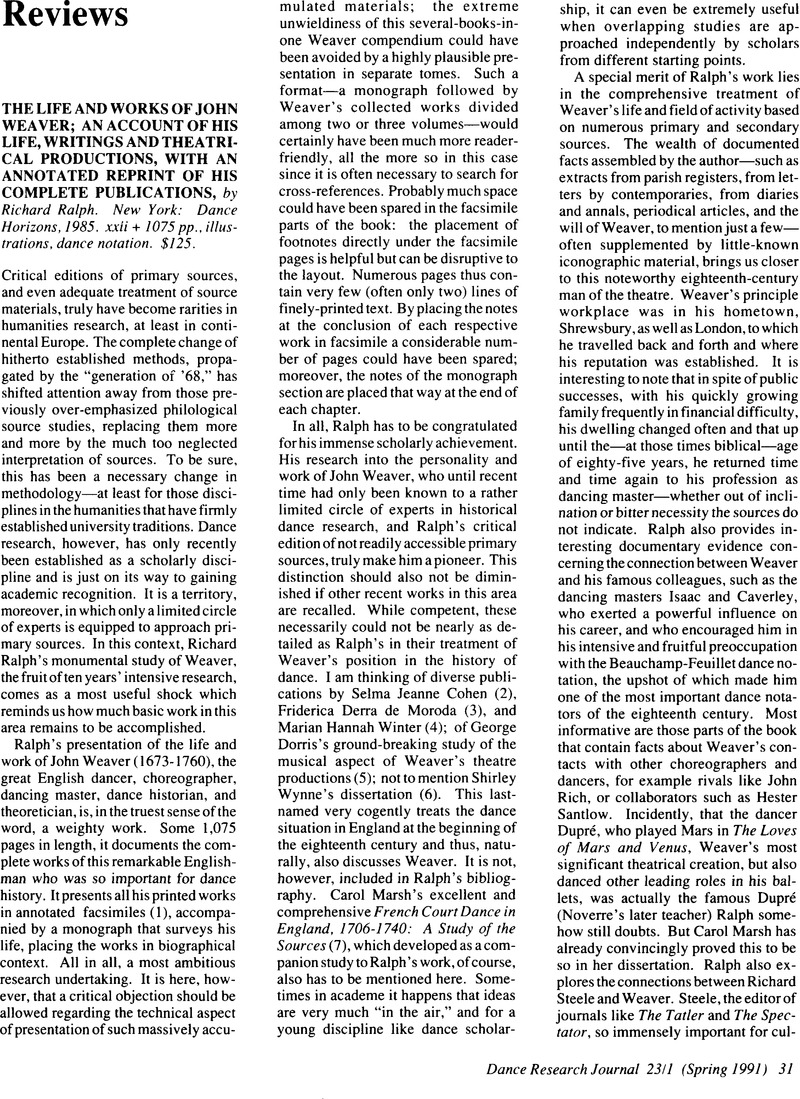No CrossRef data available.
Published online by Cambridge University Press: 22 July 2014

1. The annotated facsimiles of Weaver's works include: Notations—Orchesography (translation of Feuillet's Chorégraphy), A Small Treatise of Time and Cadence in Dancing (translation of Feuillet's Traité de la Cadence), a Collection of Ball-Dances by Isaac; Historical Writings—An Essay towards an History of Dancing, The History of the Mimes and Pantomimes, articles for The Spectator; Anatomical Writings—Anatomical and Mechanical Lectures upon Dancing; and Libretti—for The Loves of Mars and Venus, Orpheus and Eurydice, Perseus and Andromeda, and Judgement of Paris.
2. Cohen, S. J., “Theory and Practice of Theatrical Dancing,” in Famed for Dance: Essays on the Theory and Practice of Theatrical Dancing in England, 1660–1740, ed. Fletcher, I. K., Cohen, S. J., Lonsdale, R. (New York: 1960).Google Scholar
3. Derra de Moroda, F., “The Ballet-Masters before, at the time of, and after Noverre,” Chigiana 29/30 (1975): 473–485.Google Scholar
4. Winter, M. H., The Pre-Romantic Ballet (London: 1974).Google Scholar
5. Dorris, G., “Music for the Ballets of John Weaver,” Dance Chronicle 3:1 (1979): 46–60.CrossRefGoogle Scholar
6. Wynne, S., “The Charms of Complaisance: The Dance in England in the Early Eighteenth Century” (Ph.D diss., Ohio State University, 1967).Google Scholar
7. New York: City University of New York, 1985.
8. See Dancing Times, 1960: 244.